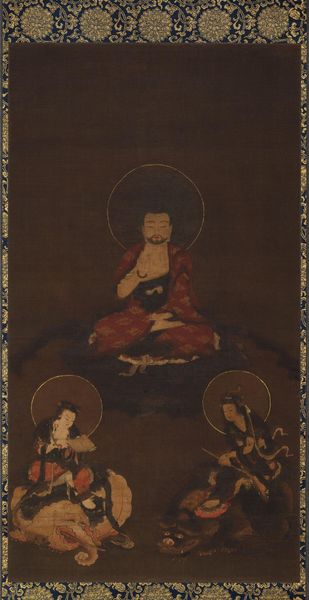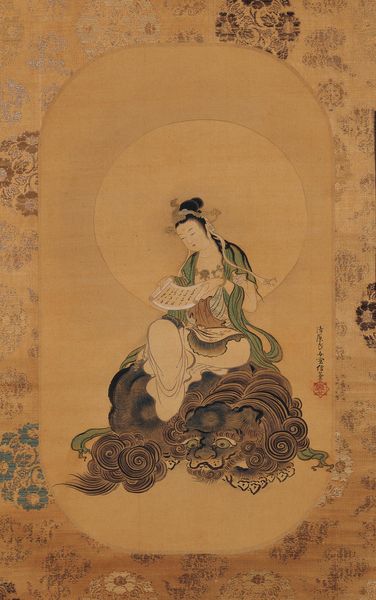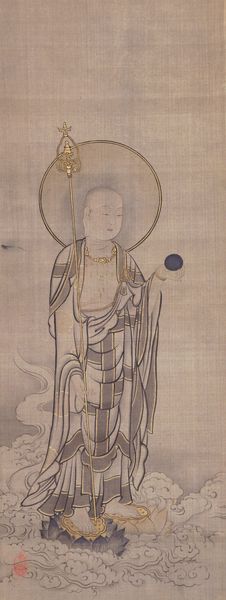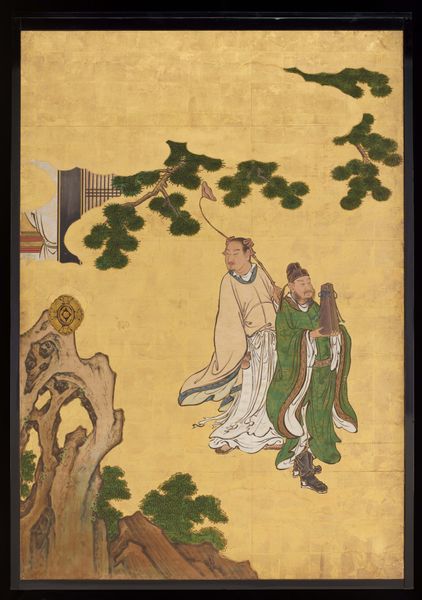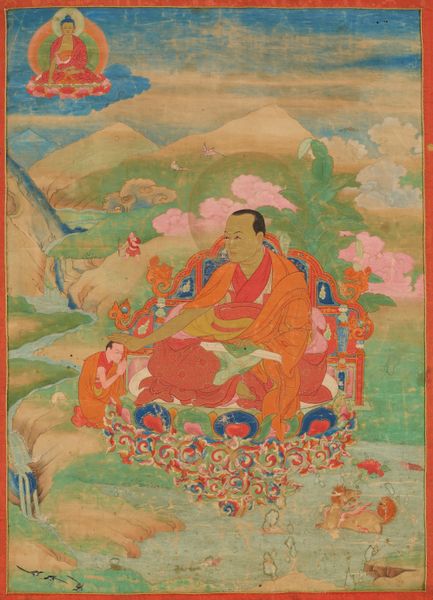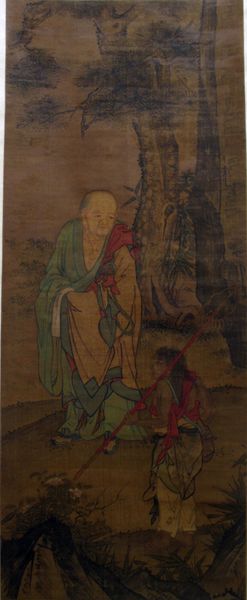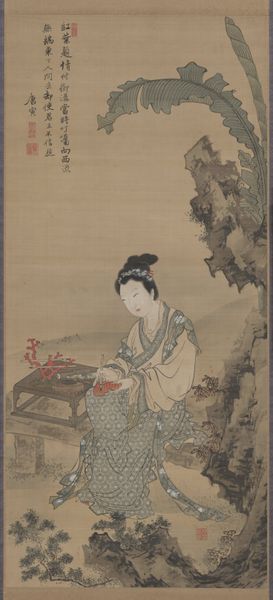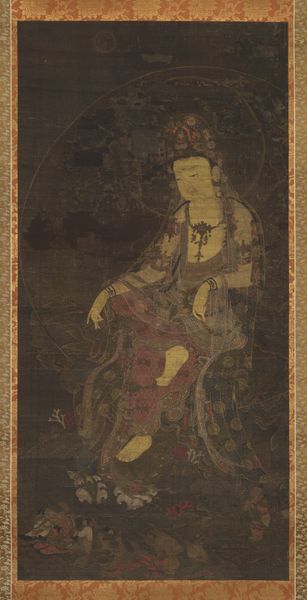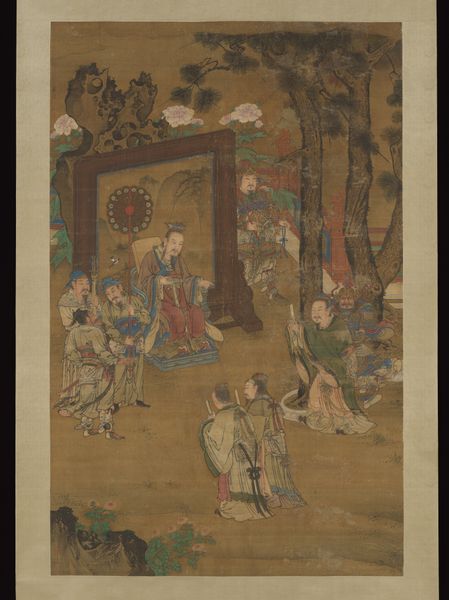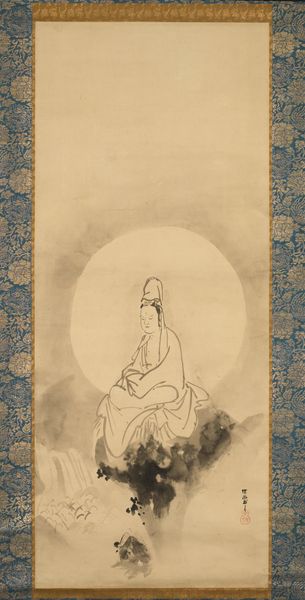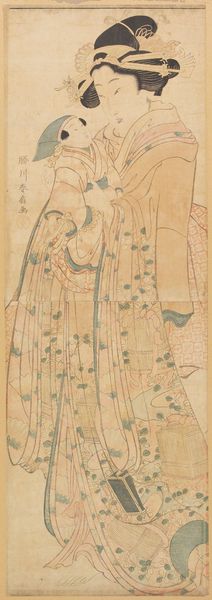
Painted Banner (Thangka) of Vajriputra, One of the Sixteen Great Arhats late 17th/early 18th century
0:00
0:00
tempera, painting, ink
#
portrait
#
water colours
#
tempera
#
painting
#
asian-art
#
landscape
#
figuration
#
ink
#
orientalism
#
miniature
Dimensions: 102 × 61.5 cm (40 1/8 × 24 1/4 in.)
Copyright: Public Domain
Curator: Here we have a Painted Banner, a Thangka, depicting Vajriputra, one of the Sixteen Great Arhats. It dates to the late 17th or early 18th century. Editor: It’s stunningly ethereal! The landscape dissolves into these pastel washes, creating such a dreamlike space. You can almost feel the meditative calm. Curator: Thangkas such as this one weren’t mere decoration; they were devotional objects. Consider the figure's placement within the composition. The Arhat, identifiable through the attributes of iconography and also a Sanskrit honorific, is centralized and illuminated by his halo. Editor: I'm struck by the materials – the use of tempera and ink gives it a particular texture and luminosity, even on the fabric support. You can sense the artist building layer upon layer, carefully controlling the flow of pigment. What kind of fabric is this painting? Curator: The cultural memory embedded within Thangkas reflects the importance of lineage, and how spiritual authority is transmitted. Every color, gesture, and implement possesses deep symbolic meaning tied to Buddhist beliefs. Editor: And it’s a fascinating social artifact. These weren’t mass-produced items. Think of the labor involved – grinding pigments, preparing the cloth, the meticulous brushwork... and this was designed as a teaching tool. Someone invested a considerable amount of wealth in commissioning this, while an entire community knew how to "read" it, as well. Curator: Absolutely, because it served as an aid in teaching Buddhist principles through narrative and imagery. Every detail down to the facial expressions. Look at his gentle gaze and compare that to his attendant. This reflects compassion and profound wisdom. These would encourage viewers to reflect on the Arhat’s life. Editor: It’s interesting how this integrates the natural world so thoroughly. We see not just human figures, but also animals and elements of landscape which adds depth. Even the surrounding environment becomes a character in this painting. Curator: I agree. The swirling clouds, the blossoming trees all speak to the interconnectedness of all things – a central tenet of Buddhist philosophy, indeed. It’s also speaking to an idealized place, the Pure Land of this tradition. Editor: Knowing more about its creation certainly enriches my appreciation of it as an object and the culture that it served. The artist wasn’t just decorating, he was an educator as well. Curator: For me, appreciating this requires the recognition of it as a historical text capable of enriching my empathy, challenging my presumptions and enriching the story of consciousness itself.
Comments
No comments
Be the first to comment and join the conversation on the ultimate creative platform.
